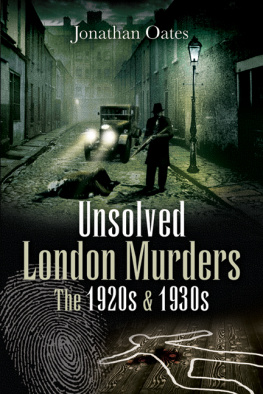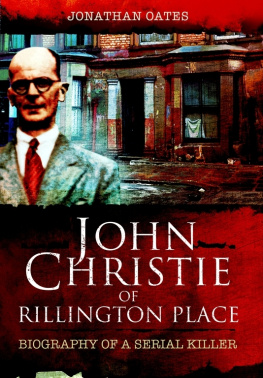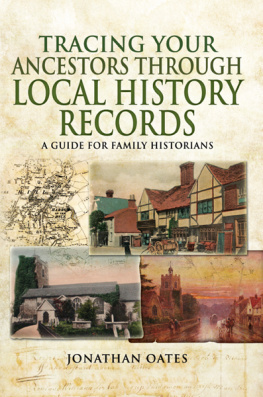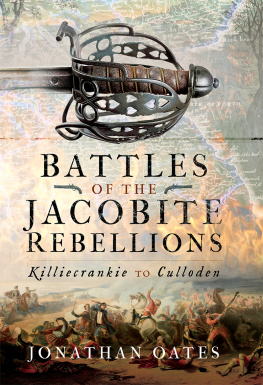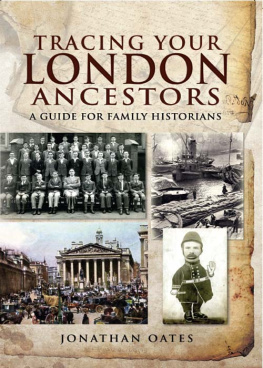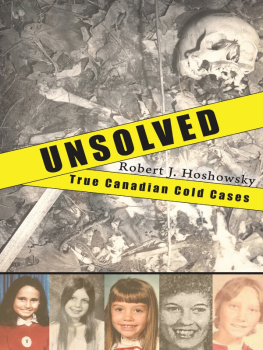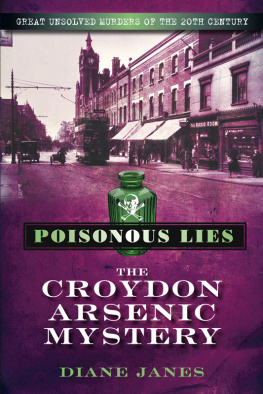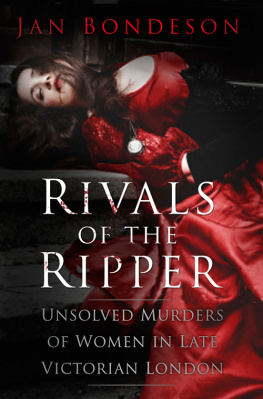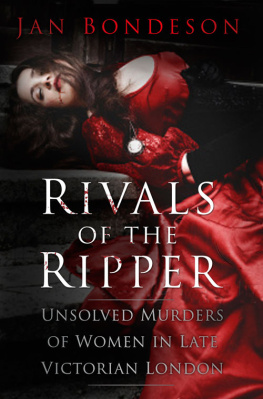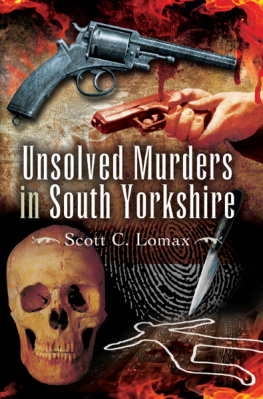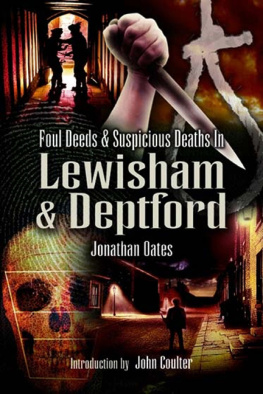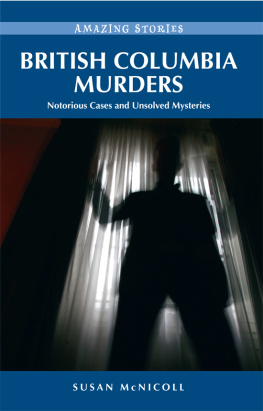
TRUE CRIME FROM WHARNCLIFFE
Foul Deeds and Suspicious Deaths Series
Barking, Dagenham & Chadwell Heath
Barnsley
Bath
Bedford
Birmingham
Black Country
Blackburn and Hyndburn
Bolton
Bradford
Brighton
Bristol
Cambridge
Carlisle
Chesterfield
Colchester
Coventry
Croydon
Derby
Dublin
Durham
Ealing
Folkestone and Dover
Grimsby
Guernsey
Guildford
Halifax
Hampstead, Holborn and St Pancras
Huddersfield
Hull
Leeds
Leicester
Lewisham and Deptford
Liverpool
Londons East End
Londons West End
Manchester
Mansfield
More Foul Deeds Birmingham
More Foul Deeds Chesterfield
More Foul Deeds Wakefield
Newcastle
Newport
Norfolk
Northampton
Nottingham
Oxfordshire
Pontefract and Castleford
Portsmouth
Rotherham
Scunthorpe
Southend-on-Sea
Staffordshire and The Potteries
Stratford and South Warwickshire
Tees
Warwickshire
Wigan
York
OTHER TRUE CRIME BOOKS FROM WHARNCLIFFE
A-Z of Yorkshire Murder
Black Barnsley
Brighton Crime and Vice 1800-2000
Durham Executions
Essex Murders
Executions & Hangings in Newcastle and Morpeth
Norfolk Mayhem and Murder
Norwich Murders
Strangeways Hanged
The A-Z of London Murders
Unsolved Murders in Victorian and Edwardian London
Unsolved Norfolk Murders
Unsolved Yorkshire Murders
Yorkshires Murderous Women
Please contact us via any of the methods below for more information or a catalogue.
WHARNCLIFFE BOOKS
47 Church Street - Barnsley - South Yorkshire - S70 2AS
Tel: 01226 734555 - 734222 Fax: 01226 - 734438
E-mail: enquiries@pen-and-sword.co.uk
Website: www.wharncliffebooks.co.uk


First published in Great Britain in 2009 by
Wharncliffe Books
an imprint of
Pen & Sword Books Ltd
47 Church Street
Barnsley
South Yorkshire
S70 2AS
Copyright Jonathan Oates 2009
ISBN 978 1 84563 075 1
eISBN 978-1-78303-720-9
The right of Jonathan Oates to be identified as Author of this Work has been asserted by him in accordance with the Copyright, Designs and Patents Act 1988.
A CIP catalogue record for this book is available from the British Library
All rights reserved. No part of this book may be reproduced or transmitted in any form or by any means, electronic or mechanical including photocopying, recording or by any information storage and retrieval system, without permission from the Publisher in writing.
Typeset in the UK by
Mac Style, Beverley, East Yorkshire
Printed and bound in the UK by
CPI
Pen & Sword Books Ltd incorporates the Imprints of Pen & Sword Aviation, Pen & Sword Maritime, Pen & Sword Military, Wharncliffe Local History, Pen and Sword Select, Pen and Sword Military Classics and Leo Cooper.
For a complete list of Pen & Sword titles please contact
PEN & SWORD BOOKS LIMITED
47 Church Street, Barnsley, South Yorkshire, S70 2AS, England
E-mail: enquiries@pen-and-sword.co.uk
Website: www.pen-and-sword.co.uk
Acknowledgements
S everal people have helped me with this book. John Coulter, Jane Kimber and James Marshall provided me with copies taken from local newspapers from Lewisham, Hammersmith and Hounslow Libraries. Paul Lang, John Coulter and Reg Eden allowed me to use a number of pictures from their collections of postcards and John Coulter took photographs for my use. William Bignell assisted me with his reminiscences of pre-war life in London.
More anonymously, I need to thank the staffs at the Westminster Archives Service, Kensington Library, the British Library, the British Library Newspaper Library and the National Archives, for providing microfilm, books, archives and electoral registers.
This book is dedicated to Jenny.
Introduction
N ame a crime or criminal in the London of the 1920s and 1930s. I certainly couldnt, until I began writing about real crime in London a few years ago. Whereas, before then, even I could have named a Victorian killer (Jack the Ripper), an Edwardian one (Dr Crippen) or a post-war murderer (John Christie). For most people, crime in England in this period is dominated by the fictional whodunit. Conan Doyles Sherlock Holmes stories still appeared in The Strand in the 1920s, though the stories were all set before 1914, and new sleuths, such as Agatha Christies Hercule Poirot, Margery Allinghams Albert Campion and Dorothy L Sayerss Lord Peter Wimsey, all emerged in this era to do battle with fictional criminals, almost always taken from the middle and upper classes. Television and radio dramas and films have made these characters well known.
The real villains, their victims and their foul deeds have been largely overlooked, at least in the public mindset. Compendia of crime refer to some of these, such as the infamous case of Vera Page in 1931 and the Croydon poisonings of 19289, but most of these are now forgotten, and in any case, most have only been dealt with in a very cursory manner. The majority featured here have never been discussed in print since they were reported in the press. It is the aim of this book to bring them back to public view. This book deals with all the unsolved murders in London from the 1920s and 1930s. Among the crimes found here are a railway murder, the mystery of parts of a body found at Brentford and at Waterloo station, prostitute murders in Soho, the fatal shooting of a policeman, a brutal child murder and two IRA killings. It does not include the Croydon poisonings (19289), the murder of Louisa Steele (1931) or Robert Venner (1934), for though these are usually stated as being unsolved, the authors examination of police files has revealed that the police were well aware of who was responsible, but they lacked the evidence to bring the cases to trial. These two latter killings are detailed in the authors Foul Deeds and Suspicious Deaths in Lewisham and Deptford , and the police file on the Croydon case provides a convincing case against the killer who also escaped justice.

Ellie Norwood as Sherlock Holmes, 1920s. Authors collection
There is a mystery and a horror with unsolved murders. First, there is the horror of a brutal killing. Secondly, there is the mystery of who was responsible and the added horror of the knowledge that the killer walked free. They might have killed again. From the view of both police and friends and relations of the deceased, it is unfinished business, a chapter which can never be satisfactorily closed.

Birdhurst Rise, Croydon, 2007. John Coulter.
The evidence for this book comes from a number of primary sources, documents written at the time of events or at least shortly afterwards. Most important are the murder files created by the investigating police officials themselves. These contain statements by witnesses, medical reports, anonymous letters, case summaries by the detectives and other related evidence. These are located at the National Archives at Kew. They give much more detail than that which appears in the press. Secondly, there are the newspaper reports of the time, which reveal the public facts as they emerged from police bulletins and reports of the inquests on the victims. The Times online was a principal source, but so too are local newspapers and the tabloid Illustrated Police News . Finally there are memoirs of serving officers, who discussed their cases, failures as well as successes. These give an insight into the thinking of the police, but should not always be taken as being entirely factual, as officers memories are often at fault. I have also looked at books about crime, in order to learn what other writers have thought about these cases, though most have only given them a cursory survey.
Next page
